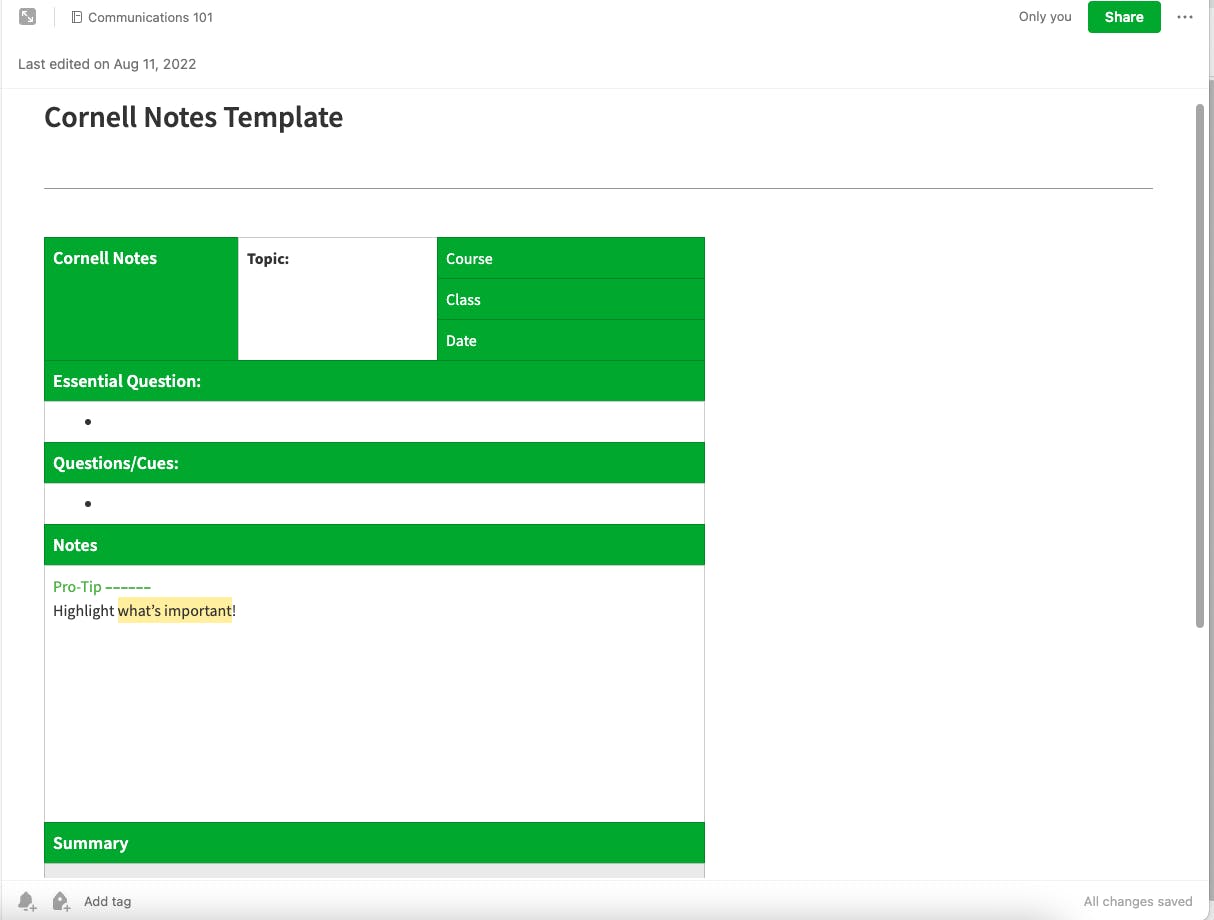While note-taking is a skill that will always come in handy, effective note-taking is an essential tool for any college student today. It helps you keep track of important details and organize ideas into a coherent plan. And one of the most powerful methods for streamlining your note-taking is the Cornell Notes system.
Based on an easy-to-remember mnemonic, the Cornell Notes system hinges on five key points: record, reduce, recite, reflect, and review. With a little practice and the right organizational tools, you can use it to promote productivity and improve efficiency—pushing you and your understanding right to the front of any college class.
What exactly is the Cornell Notes system?
The Cornell Notes system—also known as the Cornell note-taking system, Cornell method, or Cornell way—was devised in the 1950s by Walter Pauk, an education professor at Cornell University. He advocated its use in his best-selling book “How to Study in College,” and it’s proved an invaluable asset for students ever since. Its methodology is easy to remember and a snap to implement, which has helped it thrive even as traditional pen-and-paper note-taking gives way to digital screens and personal devices. That makes it still widely applicable for college projects today.
Why should you use the Cornell Method?
The biggest benefit of the Cornell Notes system is its efficiency. The five steps are easy to remember, and the methodology doesn’t take a great deal to get in the habit of doing. The system encourages you to reflect on your notes by actively summarizing them in your own words. It divides the page into sections that keep your thoughts organized, guiding you from key one-or-two-word terms into larger and more complex ideas. This narrow-to-broad structure keeps you from getting bogged down in details—and missing other parts of the lecture as a result. Its straightforward nature leads to quick results, with only a little practice required to start reaping the benefits.
Power tip: Evernote comes with a ready-made Cornell Notes template, letting you jump in and master all your study notes quickly, accurately, and efficiently.
Take notes using the Cornell System

The Cornell Notes system relies on a five-word “R” mnemonic, reflecting each of the system’s five steps. It’s easy to follow, but like any system, it takes practice to make it work the way it’s intended. Furthermore, you might tweak the steps in small ways to fit your routine, enhancing their effectiveness in the process. The five steps are:
Record
Divide your paper into two columns: a narrow column on the left-hand side of your paper or screen, and a wider column on the right. Leave two inches at the bottom for a summary. The left-hand column should be used for cues: one- or two-word titles for key concepts. Use the right-hand column to take notes elaborating on those concepts. Write a summary at the end of the lecture—or whatever event you’re taking notes on—at the bottom for easy reference.
Reduce
In this case, “reduce” means examining your notes after the fact, and clarifying their meaning until you understand them completely. In many cases, it helps to develop questions based on your notes, which can help focus your studies on specific answers. Those questions should lead to deeper and more complex parts of the topic, triggering your memory to retain what you need.
Recite
Once you believe you have a good grasp of the material in your notes, cover the right column and attempt to recite the key points of the hidden information. Periodically repeat this step as needed until you get the core details down to your satisfaction.
Reflect
With the basics down, take time to examine more complex questions that your notes draw attention to. Expand your thoughts, seek the source of any facts or principles, and look for practical applications. This is the step where your note-taking should bear the most fruit.
Review
Once you have everything down, it pays to review your notes at least once a week for 10-15 minutes. That will help keep the details sharp and ensure that they are never far from your mind.
Power tip: If you do best note-taking by hand, use Evernote’s Document Scanner feature to digitally scan and save your hand-written Cornell notes, and organize them as you see fit.
Time to take some notes
Whether you rely on traditional pen-and-paper note-taking or prefer digital notes on a mobile app or laptop, it helps to have a system in place to keep things organized. The Cornell Notes system is just one among many, but its popularity has made it a keeper with students worldwide. And with the right tools in hand, it won’t matter whether you’re an analog or digital note-taker, you’ll be able to raise your note-taking game today.
